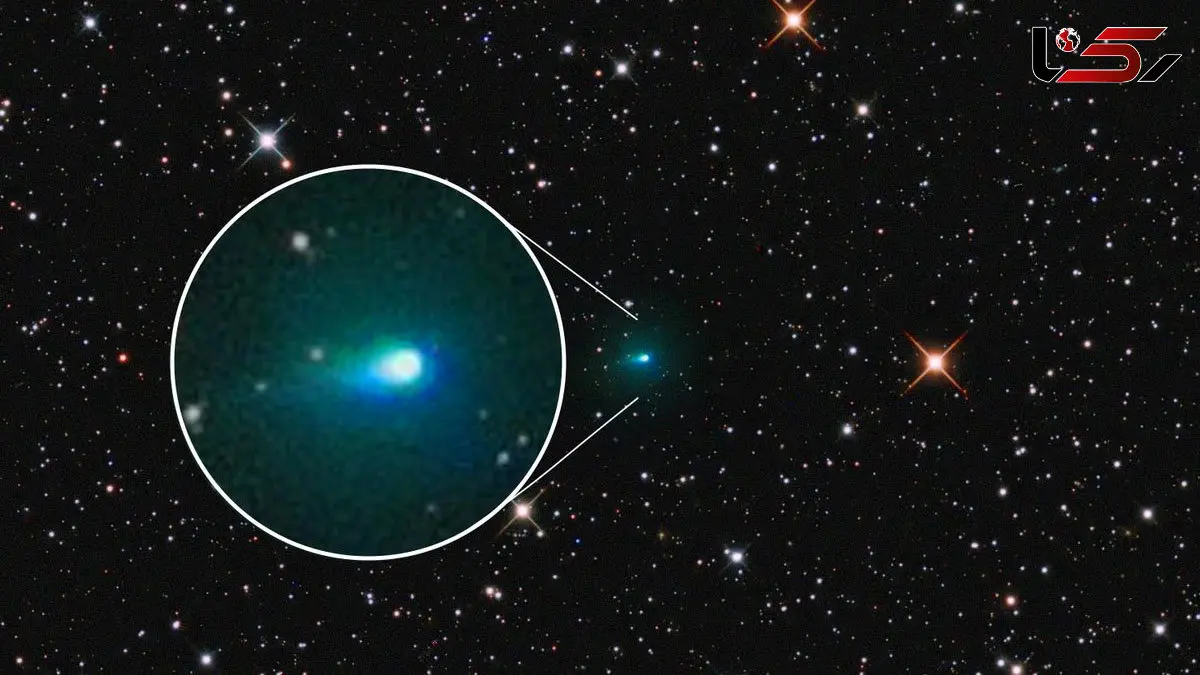“3IAtlas”: The Arrival of Extraterrestrials in the Solar System for the First Time + Video
Rokna Social Desk: Astronomers have detected a mysterious interstellar object known as “Atlas 31” entering our solar system — an unprecedented event that has sparked global curiosity and speculation about the possibility of an extraterrestrial origin.

According to Rokna, citing NASA Science, astronomers around the globe are tracking 3I/ATLAS, a rare interstellar comet that has entered our solar system and is offering scientists an unprecedented opportunity to probe material formed far beyond the Sun’s neighborhood. First detected by the Asteroid Terrestrial-impact Last Alert System (ATLAS) survey on 1 July 2025, the object was quickly identified as interstellar after follow-up observations revealed a hyperbolic trajectory unlike that of a solar-bound comet. That designation — 3I/ATLAS, also catalogued as C/2025 N1 (ATLAS) — marks it as only the third confirmed object known to have originated outside the solar system.
The discovery triggered an immediate global observing campaign. Professional observatories and space agencies redirected telescopes to build a time-series of observations spanning optical imaging, spectroscopy and radio follow-ups. Early images showed a faint coma and a short tail, indicating that 3I/ATLAS is actively releasing gas and dust as sunlight heats its surface. The object’s brightness and evolving coma have permitted teams to estimate its size and probe its composition using both ground-based facilities and space telescopes.
Trajectory and approach — safe but spectacular
Orbital calculations show that 3I/ATLAS is following a highly hyperbolic path and will not be captured by the Sun; it is merely passing through. Its inbound velocity and trajectory point to an origin outside the solar system, coming from a direction near the constellation Sagittarius. The object reached its closest approach to the Sun (perihelion) in late October 2025 at a distance roughly comparable to Mars’ orbit, and it will continue outbound, receding from the Sun and eventually leaving the solar neighborhood for good. Importantly, all orbital solutions indicate the comet poses no impact threat to Earth.
Size, speed and composition — clues from light and spectra
Measurements of 3I/ATLAS’s brightness and the scale of its coma suggest it is significantly larger than previous interstellar visitors, though estimates vary depending on how much of the observed light comes from an extended coma versus a solid nucleus. Radar and photometric fits point to a nucleus that may be on the order of kilometers across, while spectroscopic observations reveal the presence of volatile species and dust signatures commonly associated with icy comets. Observations with ultraviolet and X-ray sensitive instruments have helped identify characteristic emissions from gas molecules, allowing researchers to compare 3I/ATLAS’s chemistry to that of comets formed within our own planetary system.
Scientific payoff and coordinated campaigns
Because interstellar objects carry material that formed around other stars, 3I/ATLAS represents a unique sample of extrasolar chemistry and geology. Teams are exploiting every observational window: large optical and infrared telescopes aim to refine estimates of its nucleus size and map out dust properties, while spectrographs probe molecular abundances (water, carbon-bearing species and trace metals). Spacecraft and in-situ assets that happen to be nearby on the ecliptic have also been evaluated for opportunistic measurements of the comet’s ion tail and surrounding plasma environment. Researchers say the combined datasets will inform models of planetesimal formation and the diversity of small bodies in the Galaxy.
Debate and provocative hypotheses
The passage of 3I/ATLAS has reignited discussion about how to interpret surprising observational anomalies when they appear. A handful of scientists have pointed to unusual features in the object’s activity and composition and have argued these warrant careful scrutiny. Others caution that natural explanations—such as unusual thermal processing, fragmentary structure, or an atypical mixture of ices and dust—remain well within the realm of cometary physics. Public debate has followed these scientific discussions, and the community is emphasizing that extraordinary claims require extraordinary evidence.
What comes next
As 3I/ATLAS moves away from perihelion it will continue to be visible to increasingly larger telescopes, giving astronomers further opportunity to watch how its coma and tail evolve under solar heating. Data collected now will be mined for years: archival photometry and spectroscopy can reveal whether the object carries isotopic ratios or chemical fingerprints distinct from solar system comets. For now, the international astronomy community is treating 3I/ATLAS as a rare natural laboratory — a visitor from afar that may answer new questions about the processes that build planets and small bodies across the Galaxy.
Send Comments